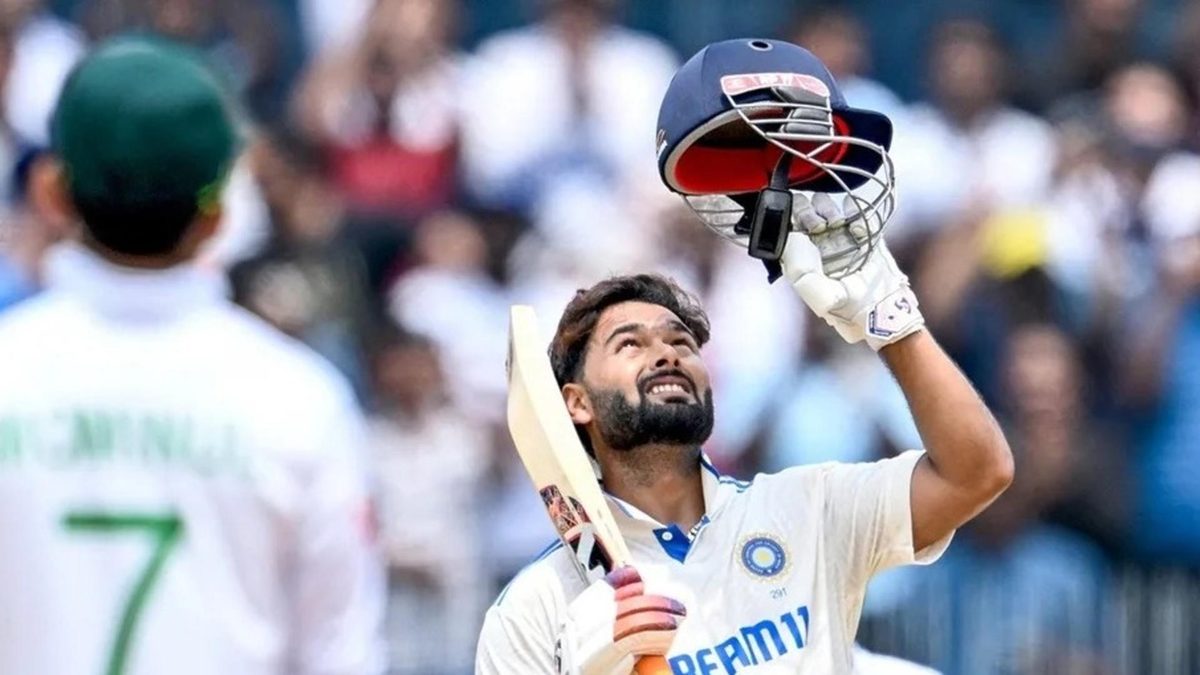
is already India’s greatest Test wicketkeeper-batter: it is time for him to expand his legacy beyond the geographical confines.
Janardan Navle, India’s first wicketkeeper, faced the first ball for them in Test cricket. Dilawar Hussain, his successor behind the stumps, also opened batting – and averaged 42.33 across six innings.
At the other end of the spectrum were the rank tail-enders, who often batted at 10 or 11. This included Probir Sen, the first Indian keeper with a reasonably long career (14 Tests). Sen’s exceptional glovework kept Madhav Mantri, a bona-fide opener, out of the side. One must remember that despite the illustrious career of , it was not expected of glovemen to be prolific batters. , often considered India’s first outstanding wicketkeeper, averaged only 10.22 with the bat in Test cricket.
Budhi Kunderan debuted for India before playing Ranji Trophy, and hit 192 in his second Test (against England at Madras in 1961/62) including 170 on the first day. His career coincided with ’s. When the two played together, Engineer kept wicket. Both averaged in the low 30s in Test cricket, but in the 1960s, only two Indians made a thousand runs while averaging 40.
Engineer’s long-term successor equalled the national record of two hundreds among wicketkeepers. Kiran More got none. Nayan Mongia, one. It was not until 2009 that made his third hundred, setting a new high for India.
Dhoni raised the bar to six, from 90 Tests. Rishabh Pant has since equalled that count, from 34. Only Wriddhiman Saha has half their count. Between them, Dhoni and Pant have 12 of the 26 hundreds scored by Indians.
There is little doubt that Pant and Dhoni have been the most prolific Test batters among Indian keepers. However, there is a significant chasm between the two as well. Pant averages 44.79 to Dhoni’s 38.09. Away from home, Pant averages 38.85 – some distance ahead of Dhoni’s 32.84 (which is at par with Engineer’s 32.67). And only one of Dhoni’s tons – 148 at Faisalabad – came away from home. For Pant, that count stands at four, including two in England and one in each of Australia and South Africa.
It is not difficult to see that Pant (2,419) has already surpassed Dhoni (4,876) in all aspects bar aggregate runs – almost always a function of longevity. The horror accident of end-2022 threatened to disrupt Pant’s amazing run, but if the recent hundred against Bangladesh is anything to go by, his Test career is back on track.
On the Gilchrist trail
Pant is India’s best already... but where does he stand among the all-time greats?
Let us do a quick check. With a 2,000-run cut-off, only three men have had higher averages than Pant’s 44.79 while starting a Test match as designated wicketkeeper: AB de Villiers (57.41), Andy Flower (53.70), and (47.60).
Rising up the ranks is Mohammad Rizwan (43.79), though he is yet to reach 2,000 runs. Les Ames (43.40), the first great wicketkeeping all-rounder at the highest level who played with distinction for England in the 1930s and is the only keeper with a hundred first-class hundreds, is after them. It has been more than eight decades, but Ames’s eight Test hundreds are still third on the all-time list.
Further down the list are Kumar Sangakkara (40.48 as wicketkeeper) and Alec Stewart (34.92), whose averaged far more when they did not keep wicket (Stewart 46.40, Sangakkara a whopping 66.78), and had to settle for lower averages than they should have.
At this point, we shall restrict ourselves to the men above Pant. Of them, Gilchrist is perhaps the one Pant would be keenest to emulate.
Why Gilchrist and not Flower or de Villiers, both of whom successfully managed to maintain high batting averages both as specialist batters and as keepers? First, the hundreds. Gilchrist’s 17 are five clear of the 12 by Flower, the next name on the list – and no one else has even nine.
However, the comparison is more about how Gilchrist got his runs than anything else. In the 2000s, Gilchrist used to provide absurd boost to Australia’s already unfairly strong batting unit. Coming out at seven, he routinely pulverised one bowling attack after another – and often finished not out.
As late as 47 Tests into his 96-match career, Gilchrist’s average was above 60 – with a strike rate of 84. His average dropped to 47.60, but the strike rate stayed at 82 – the highest among keepers with 1,000 runs*. The second half of Gilchrist’s career might not have been as prolific as the first, but it did not affect his scoring rate.
Pant’s strike rate of 74 stands at second-best with a 1,000-run-40-average cut-off. Among keepers with a thousand runs at an average of 40, Quinton de Kock is the only other one (3,250 runs at 40.12 and 71) to have struck at above 70. Pant is definitely on track.
Pant’s career stands at 2,419 runs and six hundreds from 34 Tests. These may seem some distance away from Gilchrist’s 5,570 and 17 from 96, but if Pant continues to score at the same rate – in other words, replicate his 34-Test record across 96 Tests – he would finish with 6,830 and 17. That hundred count may perhaps go further up, for he has converted only six of his 12 nineties into hundreds (Gilchrist had converted 17 of his 20).
Of course, it is not wise to expect that a career will progress across a straight, uniform path. However, Pant is not even 27. At his age, only de Kock and Mark Boucher had more Test runs among keepers, but neither averaged 40. And no one in the world had as many hundreds.
Spotted as a young talent, Gilchrist played as a specialist batter for New South Wales (Phil Emery kept wicket). He moved to Western Australia, where he faced some hostility from local fans who found it difficult to deal with local hero Tim Zoehrer being out of the XI. It was not until 26 that he played first-class for Australia A. By that age, Pant had played 31 Tests and had hundreds in four different countries.
Gilchrist was 28 when he finally replaced Ian Healy in the Test side. There is little doubt that he peaked in his 30s. If the same holds true for Pant, he might set standards hitherto unknown.
*where data is available
Follow Wisden for all cricket updates, including live scores, match stats, quizzes and more. Stay up to date with the latest cricket news, player updates, team standings, match highlights, video analysis and live match odds.







